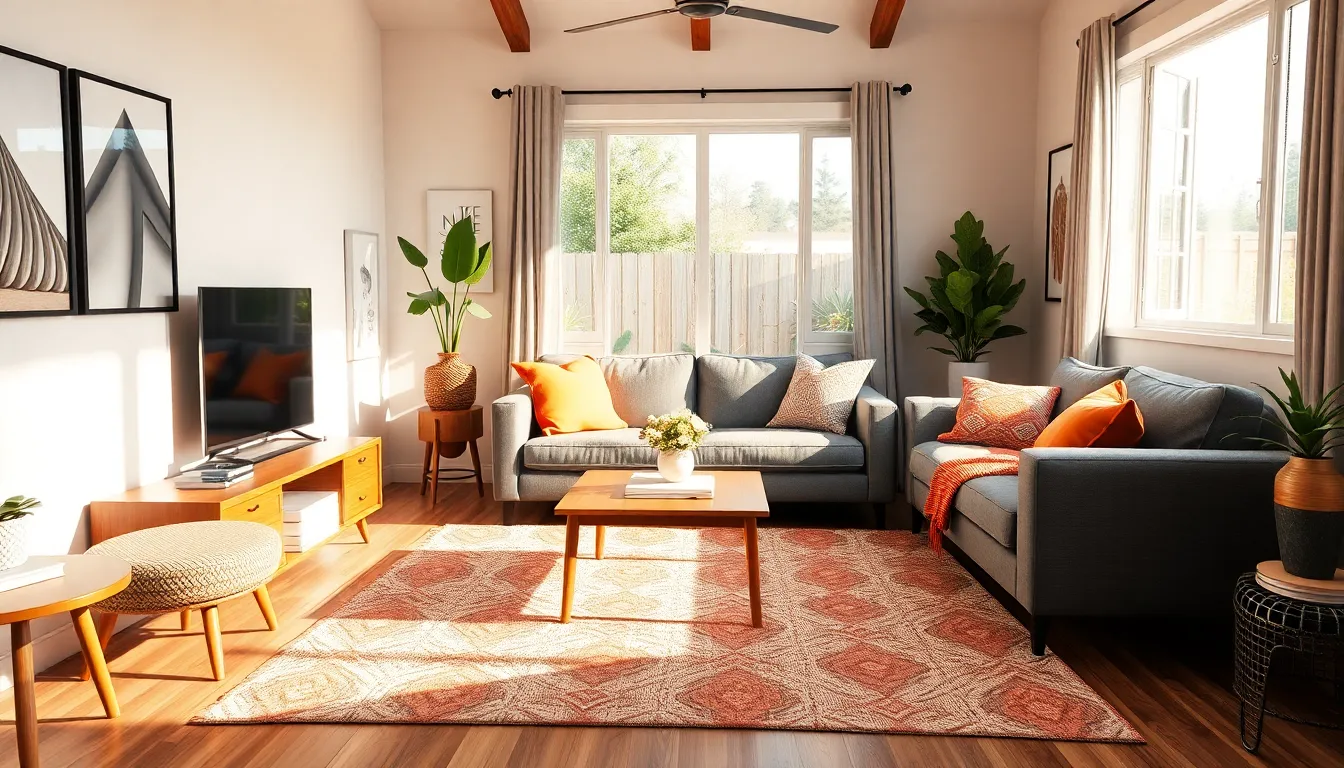Buying furniture is more than just a shopping trip; it’s an investment in comfort and style. With countless options available, from sleek modern designs to timeless classics, finding the perfect pieces can feel overwhelming. Yet, understanding what to look for can transform the experience into an exciting journey.
Whether furnishing a new home or refreshing a space, knowing the essentials can save time and money. Quality, functionality, and aesthetic appeal are key factors that should guide every decision. With the right approach, anyone can create a harmonious environment that reflects their personality and meets their needs.
Table of Contents
ToggleFactors To Consider When You Buy Furniture
When selecting furniture, certain critical factors influence the overall decision. Understanding quality, style, and space ensures a satisfying purchase that meets individual needs.
Quality and Durability
Purchasing furniture necessitates assessing quality and durability. High-quality materials like hardwood or metal often last longer than cheaper alternatives like particle board. Look for sturdy joints, smooth finishes, and reliable hardware. For example, a sofa with a resilient frame and durable upholstery withstands daily use effectively. Research brands known for quality by reading reviews and seeking recommendations from trusted sources.
Style and Aesthetics
Style and aesthetics play significant roles in furniture selection. Choose pieces that complement the overall decor and personal taste. Popular styles include modern, rustic, and classic themes. Consider color schemes and patterns that blend well with existing decor. Mixing styles can create a unique ambiance, but maintaining a cohesive look is essential. Viewing swatches and samples helps gauge how furniture fits within the desired aesthetic.
Size and Space Considerations
Size and space considerations are vital in the furniture-buying process. Measure rooms accurately to understand available space. Take note of doorways and hallways to ensure larger items fit through. Creating a floor plan may aid in visualizing how furniture will organize the area, maximizing functionality while maintaining flow. Buying appropriately sized furniture prevents overcrowding and promotes a comfortable environment.
Where To Buy Furniture

Numerous options exist for purchasing furniture, catering to various preferences and budgets. Individuals can explore online retailers, local stores, and second-hand options to find the best pieces for their space.
Online Retailers
Online retailers offer extensive selections, often at competitive prices. Popular platforms include:
- Amazon: Features diverse furniture styles and brands, with customer reviews for informed decisions.
- Wayfair: Provides a vast inventory, including unique pieces and frequent discounts.
- Ikea: Specializes in modern, affordable furniture with an emphasis on functionality and space-saving designs.
- Overstock: Offers discounted furniture along with diverse styles for various budgets.
Online shopping allows easy comparison of prices and styles, plus the convenience of home delivery.
Local Stores
Local stores provide the opportunity to inspect furniture before purchase. Advantages include:
- Personal Service: Staff can offer tailored recommendations based on individual needs.
- Immediate Availability: Customers can take furniture home the same day.
- Local Craftsmen: Supporting local artisans fosters community and unique designs.
Stores like local furniture boutiques, department stores, or discount furniture retailers enable customers to find pieces that fit their style and budget.
Second-Hand Options
Second-hand options present budget-friendly alternatives and unique finds. Popular sources include:
- Thrift Stores: Often feature affordable furniture, promoting recycling and sustainability.
- Consignment Shops: Offer higher-quality used furniture, frequently at lower prices than new.
- Garage Sales: Allow for potential bargains and one-of-a-kind items directly from sellers.
- Online Marketplaces: Websites like Craigslist and Facebook Marketplace facilitate local purchases of gently used furniture.
Choosing second-hand furniture supports sustainable practices while adding character to living spaces.
Tips For Buying Furniture
Furniture shopping involves important considerations that enhance both style and functionality. These tips help streamline the process and ensure informed decisions.
Setting a Budget
Establish a clear budget before starting the furniture search. Determine the total amount available for investment, including potential costs like delivery and assembly. Allocate specific amounts for different pieces, like sofas, tables, and beds, based on priorities. Stick to the budget to avoid overspending and consider sales or discounts to maximize purchasing power.
Measuring Your Space
Accurate measurements of the space are crucial for successful furniture selection. Measure the length and width of rooms and account for any architectural features such as doors, windows, and built-ins. Create a floor plan to visualize furniture placement and ensure pieces fit comfortably without crowding the area. Consider the scale of furniture in relation to the size of the room, and leave space for movement around pieces.
Evaluating Comfort and Functionality
Assess comfort and functionality when choosing furniture. Test seating options in-store for adequate comfort levels, keeping in mind personal preferences for firmness or softness. Consider the piece’s intended use; multifunctional items like ottomans with storage or sofa beds enhance utility. Evaluate durability features, including materials and construction methods, to ensure longevity and practicality in daily use.
Maintenance Tips For Your Furniture
Proper maintenance extends the life of furniture and preserves its appearance. Following specific guidelines for cleaning and care enhances usability and aesthetics.
Cleaning Guidelines
- Dust regularly to prevent buildup that can damage finishes. Use a soft cloth or duster for fragile surfaces.
- Wipe spills immediately with a damp cloth. For tough stains, use a mild soap solution, then dry thoroughly to avoid moisture damage.
- Avoid harsh chemicals that can degrade materials. Opt for cleaners designed for specific finishes.
- Use coasters under drinks and placemats under dishes to prevent rings and scratches on surfaces.
- Vacuum upholstery and fabric pieces weekly to remove dirt and allergens. Use an appropriate attachment to protect fibers.
Repair and Care
- Inspect furniture periodically for wear or damage. Addressing issues early can prevent further deterioration.
- Tighten loose screws and bolts to maintain stability. Regular checks ensure safe use and prolong life.
- Apply furniture polish or conditioner to wood surfaces every 6-12 months. This keeps the wood hydrated and prevents cracking.
- Rotate cushions regularly to promote even wear. Alternating their use can maintain shape and comfort.
- For fabric items, follow cleaning codes when caring for upholstery. Use appropriate methods to avoid damaging fabrics.
Investing in furniture is a crucial step toward creating a comfortable and stylish living environment. By carefully considering quality, functionality, and aesthetic appeal, individuals can select pieces that not only enhance their space but also reflect their unique style.
Exploring various purchasing options allows for flexibility in budget and preferences, ensuring that everyone can find something that suits their needs.
With the right approach to maintenance, furniture can last for years, maintaining its beauty and utility. Making informed decisions and prioritizing personal taste will ultimately lead to a harmonious and inviting home.



